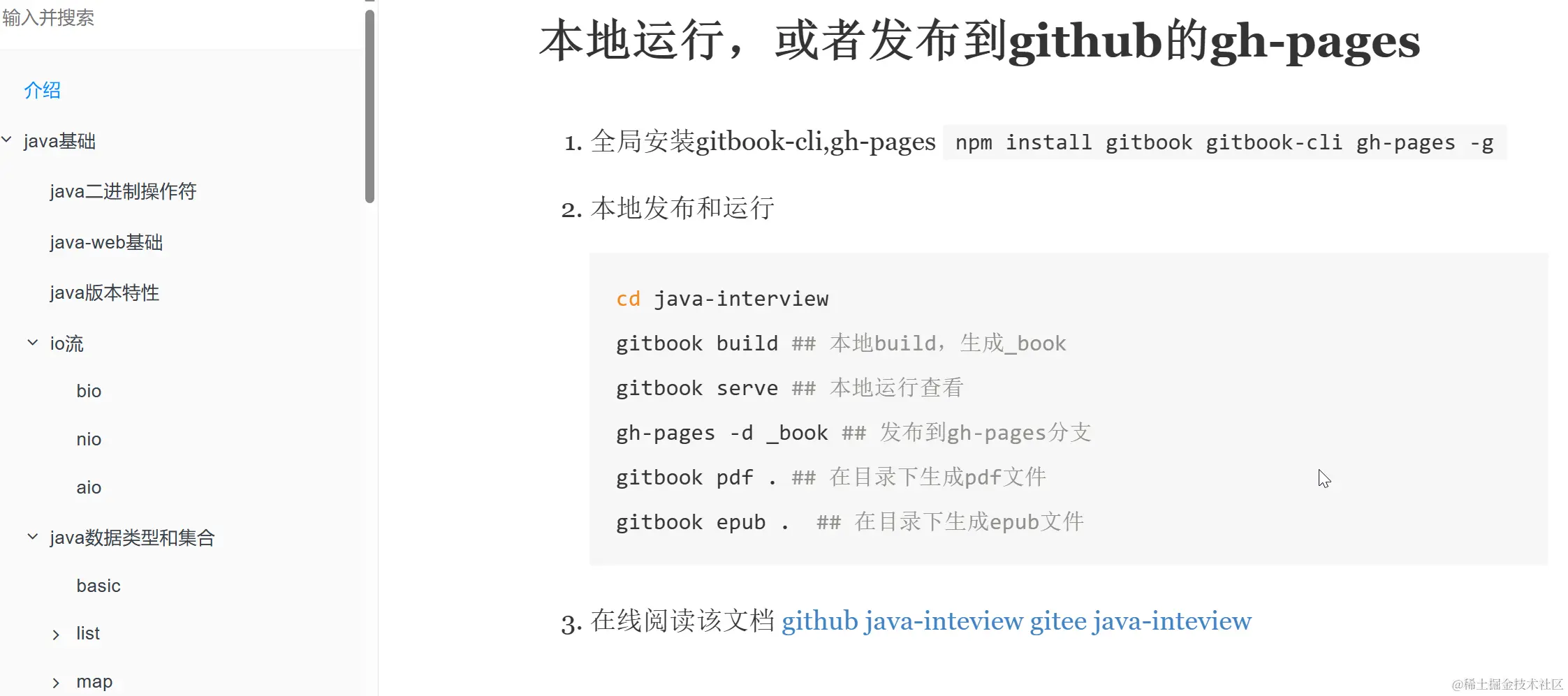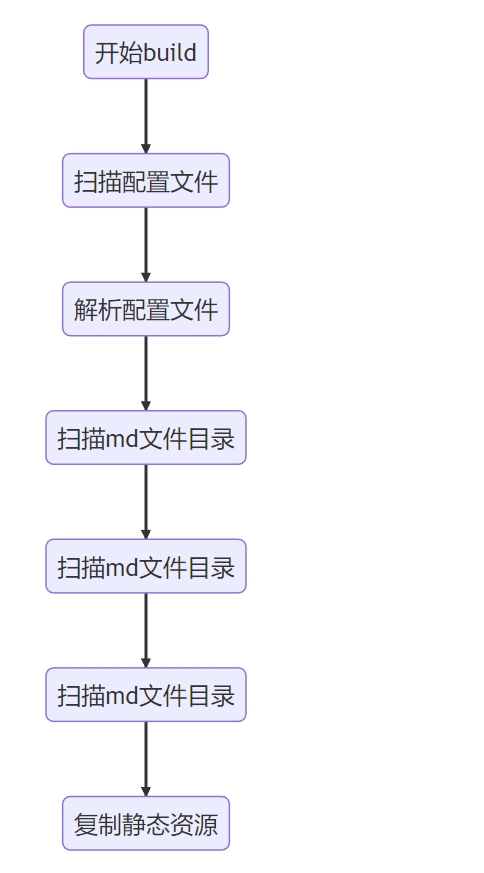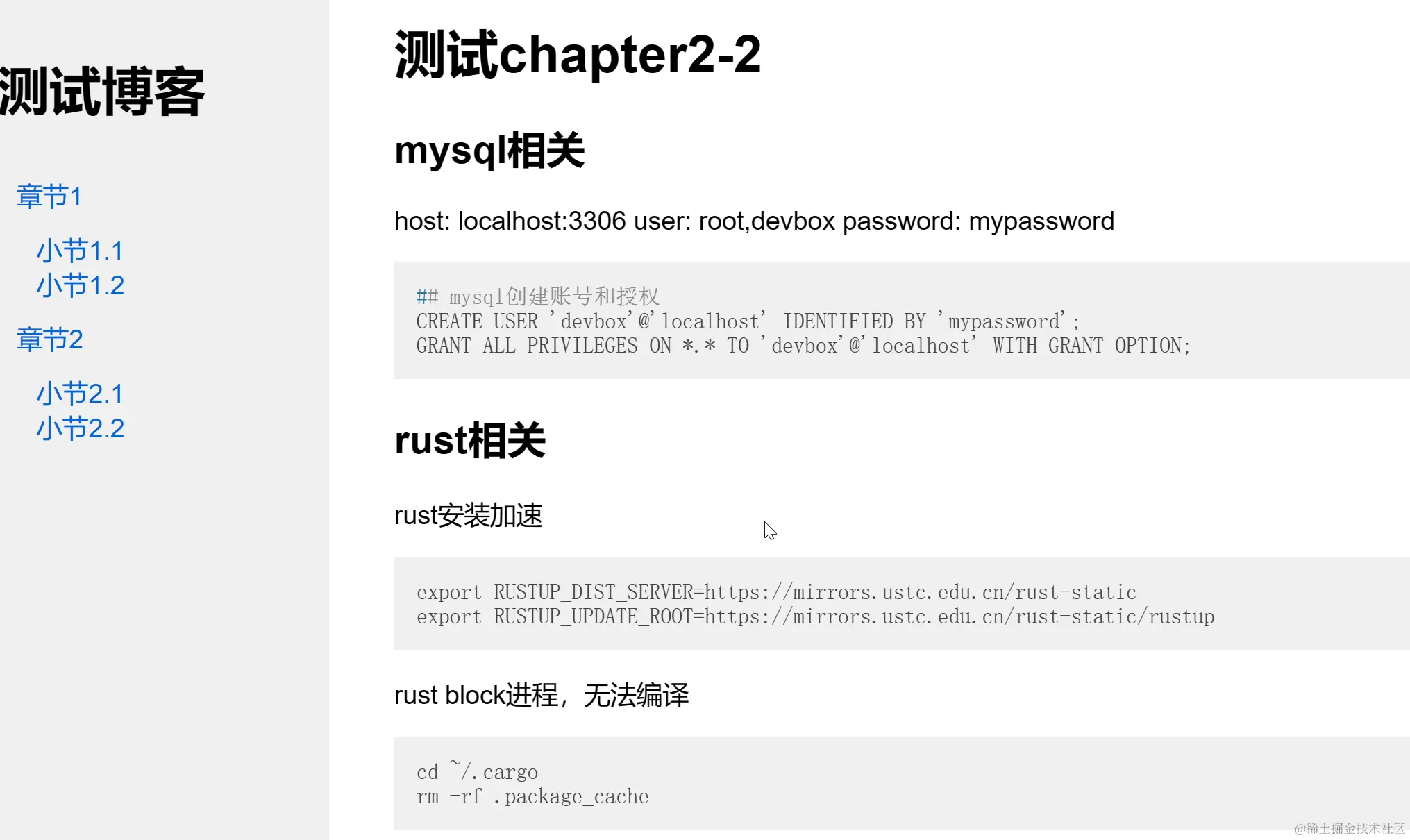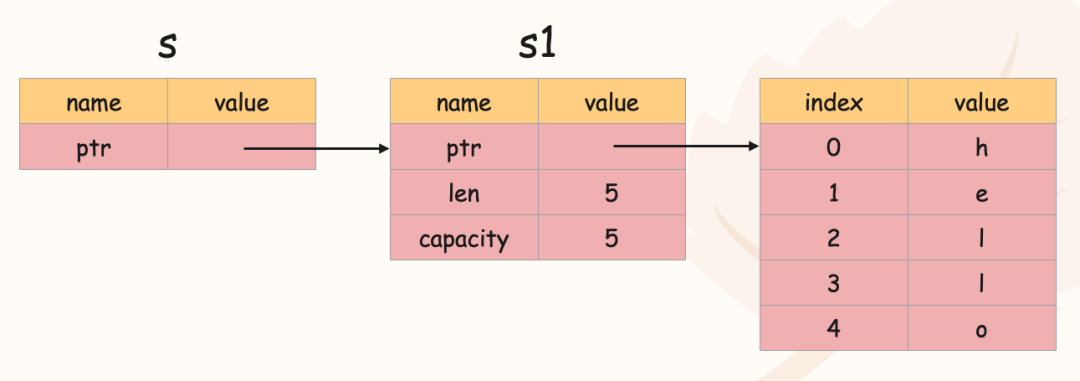这个静态博客的工具主要是把md文档转为html静态网站/博客。github链接:github.com/maochunguang/rust-md-site-tool
首先说明md文档转为静态网站/博客的原理,就是先做一个目录文档,叫做summary.md,然后其他文档都会链接到这个目录文档里。当把md文档转为html时,需要对链接进行处理,保证链接可以正常跳转,这样就完成了一个简单的md转静态博客工具。
第一步,设计博客工具
目录和样式设计
这个简易的博客/站点工具主要是模仿gitbook,可以认为是gitbook的简易版。页面布局也是gitbook一样,左边是目录,右边是内容。

首先需要定义一个博客的静态目录结构,如下图所示:
- docs目录是所有md文档源文件;
- static目录是所有静态文件的存放目录,比如js,css,image文件;
- md_config.toml是全局配置文件,
- summary.md是全局站点的目录;
- index.md是全局首页内容
├── docs
│ ├── chapter1
│ │ ├── chapter1.html
│ │ ├── chapter1.md
│ ├── chapter2
│ │ ├── chapter2.html
│ │ ├── chapter2.md
│ ├── index.md
│ └── summary.md
├── md_config.toml
└── static
├── css
│ └── style.css
├── images
└── js
summary.md格式如下:
* [章节1](chapter1/chapter1.md) * [小节1.1](chapter1/section1.1.md) * [小节1.2](chapter1/section1.2.md) * [章节2](chapter2/chapter2.md) * [小节2.1](chapter2/section2.1.md) * [小节2.2](chapter2/section2.2.md)
配置文件结构如下:
title = "My Blog" author = "Your Name" description = "This is my blog." port = 9900 static_dir = "static" md_source_dir = "docs" output_dir = ".site" default_css_header = "<link rel=\"stylesheet\" href=\"./css/style.css\">" default_code_header = "<link rel=\"stylesheet\" href=\"https://cdnjs.cloudflare.com/ajax/libs/highlight.js/11.3.1/styles/default.min.css\"><script src=\"https://cdnjs.cloudflare.com/ajax/libs/highlight.js/11.3.1/highlight.min.js\"></script>" default_code_plugin = "<script>hljs.highlightAll();</script>"
功能实现和设计
本质上是一个命令行工具,依赖clap=4.4.0来创建,第一版支持三个命令:
init,初始化一些目录和配置文件build,构建所有的文件,转为html到指定的输出目录run,本地运行,在本地预览
由于要实现md文件转为html,需要借助依赖pulldown-cmark = "0.9"。
第二步,创建三个命令
创建main.js,把三个命令写出来:
fn main() {
let matches = Command::new("rust-md-blog-tool")
.version("1.0")
.author("Your Name")
.about("A simple static site generator")
.subcommand(Command::new("init")
.about("Initializes the blog with default configuration"))
.subcommand(Command::new("build")
.about("Builds the static site from markdown files"))
.subcommand(Command::new("run")
.about("Runs a local server to view the blog"))
.get_matches();
match matches.subcommand() {
Some(("init", _)) => init_lib::init_command(),
Some(("build", _)) => build_lib::build_command(),
Some(("run", _)) => server_lib::run_command(),
_ => println!("Invalid command or no command provided"),
}
}
第三步,实现init命令
init命令就是创建一个默认的配置文件,以及六个目录和一个css文件。 核心代码如下:
- config_content是默认的配置文件内容,可以自定义字符串或者使用模板文件;
- get_style_content是默认的css文件,可以自定义字符串或者使用模板文件;
let _ = File::create("md_config.toml").and_then(|mut file| file.write_all(config_content.as_bytes()));
// 创建所需的目录
let _ = fs::create_dir_all("docs").map(|_| println!("created 'docs' Success"));
let _ = fs::create_dir_all(".site").map(|_| println!("created '.site' Success"));
let _ = fs::create_dir_all("static").map(|_| println!("created 'static' Success"));
let _ = fs::create_dir_all("static/js").map(|_| println!("created 'static/js' Success"));
let _ = fs::create_dir_all("static/css").map(|_| println!("created 'static/css' Success"));
let _ = fs::create_dir_all("static/images").map(|_| println!("created 'static/images' Success"));
let _ = File::create("static/css/style.css").and_then(|mut file| file.write_all(get_style_content().as_bytes()));
println!("Blog initialized with default configuration.");
第四步,实现build命令
构建所有的md文件流程也很简单:

核心代码如下:
pub fn build_command() {
// ... 读取配置文件和设置目录 ...
let config = fs::read_to_string("md_config.toml").expect("Unable to read config file");
let parsed_config = config.parse::<Value>().expect("Unable to parse config");
let source_dir = parsed_config.get("md_source_dir").and_then(Value::as_str).unwrap_or("docs");
// .....
println!("load config source_dir :{}, output_dir:{}", source_dir, output_dir);
let md_source_dir = Path::new(source_dir);
let summary_path =format!("{}{}", source_dir, "/summary.md");
// 解析 summary.md 并构建目录HTML
let toc_html = build_toc_content(summary_path.clone());
// 解析每个.md文件 转为HTML
let md_files = read_dir_recursive(md_source_dir).expect("read md dir failed");
// 为每个Markdown文件生成HTML页面
for entry in md_files {
let path = entry;
if path.ends_with("summary.md"){
continue;
}
let output_file_path = transform_path(&path, source_dir, output_dir);
if path.extension().and_then(|s| s.to_str()) == Some("md") {
let mut md_content = String::new();
File::open(&path).and_then(|mut file| file.read_to_string(&mut md_content)).expect("Failed to read Markdown file");
let parser = Parser::new(&md_content);
let mut html_content = String::new();
html::push_html(&mut html_content, parser);
let _ = html_content.replace(".md", ".html");
let output_file = output_file_path.with_extension("html");
println!("output file:{}", output_file.as_path().display());
let mut full_html;
// 处理index页面逻辑
full_html = format!("<html><head></head><body><div class=\"toc\">{}</div><div class=\"content\">{}</div></body></html>", toc_html, html_content);
full_html = append_html(&full_html, "</head>", &[default_css_header, default_code_header]);
// 增加highlight.js处理代码块
full_html = append_html(&full_html, "</body>", &[default_code_plugin]);
// 处理相对路径
if contains_sub_dir(&output_file, output_dir){
full_html = full_html.replace("./", "../").replace("<a href=\"", "<a href=\"../")
}
if let Some(parent) = output_file.parent() {
// 创建所有必要的父文件夹
fs::create_dir_all(parent).expect("create html parent dir failed");
}
fs::write(output_file, full_html).expect("Failed to write HTML file");
}
}
// ... 复制静态资源 ...
// 定义静态资源目录和目标目录
let static_dir = Path::new(static_dir);
let output_dir = Path::new(output_dir);
// 复制静态资源
if static_dir.exists() {
copy_dir_all(static_dir, output_dir).expect("Failed to copy static files");
}
println!("Site built successfully.");
}
生成html文件这里需要注意几个点:
- 第一个是文件路径,需要把html生成到配置的输出目录,需要一个path转换逻辑;
- summary里面的链接需要处理,默认是
.md,需要转为.html; - 所有链接的相对路径需要处理,根据目录都是用相对路径;
- 复制静态资源时,也需要注意文件路径,以及文件夹是否存在。
第五步,实现run命令
这里由于只是本地运行查看html,所以选择tiny_http,启动一个简单的http服务。核心代码如下:
pub fn run_command() {
// 读取配置文件
let config = fs::read_to_string("md_config.toml").expect("Unable to read config file");
let parsed_config = config.parse::<Value>().expect("Unable to parse config");
let port = parsed_config.get("port").and_then(Value::as_str).unwrap_or("9900");
let output_dir = parsed_config.get("output_dir").and_then(Value::as_str).unwrap_or(".site");
let address = format!("0.0.0.0:{}", port);
let server = Server::http(address).unwrap();
println!("Running local server on port {}", port);
for request in server.incoming_requests() {
let url = if request.url() == "/" {
"/index.html" // 使用 index.html 作为根路径的默认页面
} else {
request.url()
};
let file_path = PathBuf::from(output_dir).join(&url[1..]); // 移除 URL 的首个斜杠
match fs::read(&file_path) {
Ok(contents) => {
let response = Response::from_data(contents).with_header(
Header::from_bytes("Content-Type", "text/html; charset=utf-8").unwrap(),
);
request.respond(response).unwrap();
}
Err(_) => {
let response = Response::from_string("Not Found").with_status_code(404);
request.respond(response).unwrap();
}
}
}
}
这里需要注意的是,直接返回html会中文乱码,所以统一都加了Content-Type", "text/html; charset=utf-8。
第六步,展示成果
新建一个用于测试的博客目录:
- 在博客工具目录执行
cargo run生成执行的命令文件; - 复制博客工具命令,
cp target/debug/rust_md_site_tool ~/.cargo/bin; - 执行
rust_md_site_tool init初始化博客; - 在docs目录新建
summary.md和index.md,并在summary里创建好测试的md文档和链接; rust_md_site_tool build构建目录;- 打开浏览器 http://localhost:9900/ ;可以访问index.html;

到此这篇关于利用rust编一个静态博客工具的文章就介绍到这了,更多相关rust静态博客内容请搜索好代码网以前的文章或继续浏览下面的相关文章希望大家以后多多支持好代码网!




